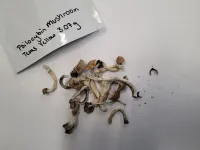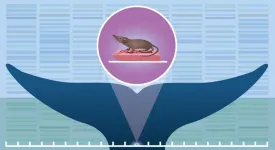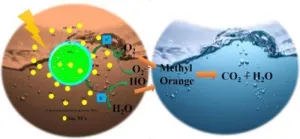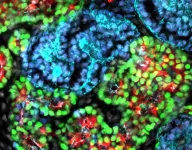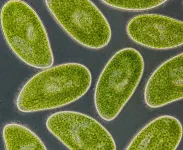(Press-News.org) Since the 1970s, the federal government has listed the active ingredients in mushrooms—psilocybin and psilocin—as illegal and having no accepted medical use.
However, in recent years, medical professionals have found that these substances are safe and effective for treating stubborn conditions such as treatment-resistant depression and post-traumatic stress disorder. Some jurisdictions now allow for the medical use of mushrooms, while others are considering permitting or at least decriminalizing their recreational use.
Clinicians now find themselves needing to carefully measure the doses of mushrooms to ensure patients receive the proper amount during treatment. To solve this problem, University of Texas at Arlington researchers have created a method to determine the clinical potency of psilocybin and psilocin in the hallucinogenic mushroom species psilocybe cubensis.
“These legislative changes are expected to facilitate further research and potential clinical applications,” said Kevin Schug, the Shimadzu Distinguished Professor of Analytical Chemistry in the Department of Chemistry and Biochemistry.
Using liquid chromatography with tandem mass spectrometry, Schug and colleagues were able to extract and measure the strength of the mushrooms, according to findings published in the February issue of Analytica Chimica Acta. Co-authors included colleagues at Scottsdale Research Institute in Phoenix; Shimadzu Scientific Instruments in Maryland; and Millipore-Sigma in Round Rock, Texas. The results were then compared with two separate labs to ensure accuracy.
“As medical professionals identify more safe and effective treatments using mushrooms, it will be important to ensure product safety, identify regulatory benchmarks and determine appropriate dosing,” Schug said. “Established and reliable analytical methods like the one we describe will be essential to these efforts to use mushrooms in clinical settings.”
END
New technique measures psilocybin potency of mushrooms
Identifying dosages for psilocybin and psilocin key as medical uses grow
2024-03-19
ELSE PRESS RELEASES FROM THIS DATE:
UC Irvine-led research team discovers role of key enzymes that drive cancer mutations
2024-03-19
Irvine, Calif., March 18, 2024 — A research team led by the University of California, Irvine has discovered the key role that the APOBEC3A and APOBEC3B enzymes play in driving cancer mutations by modifying the DNA in tumor genomes, offering potential new targets for intervention strategies.
The study, published today online in the journal Nature Communications, describes how the researchers identified the process by which APOBEC3A and APOBEC3B detect specific DNA structures, resulting in mutations at distinct positions within the tumor genome.
“It’s critical to understand how cancer cells accumulate mutations leading to ...
All creatures great and small: Sequencing the blue whale and Etruscan shrew genomes
2024-03-18
The blue whale genome was published in the journal Molecular Biology and Evolution, and the Etruscan shrew genome was published in the journal Scientific Data.
Research models using animal cell cultures can help navigate big biological questions, but these tools are only useful when following the right map.
“The genome is a blueprint of an organism,” says Yury Bukhman, first author of the published research and a computational biologist in the Ron Stewart Computational Group at the Morgridge Institute, an independent research organization that works in affiliation with the University of Wisconsin–Madison in emerging fields ...
Sustainable solution for wastewater polluted by dyes used in many industries
2024-03-18
Water pollution from dyes used in textile, food, cosmetic and other manufacturing is a major ecological concern with industry and scientists seeking biocompatible and more sustainable alternatives to protect the environment.
A new study led by Flinders University has discovered a novel way to degrade and potentially remove toxic organic chemicals including azo dyes from wastewater, using a chemical photocatalysis process powered by ultraviolet light.
Professor Gunther Andersson, from the Flinders Institute for NanoScale Science and Technology, says the process involves creating metallic ‘clusters’ of just nine gold (Au) atoms chemically ‘anchored’ ...
Food companies’ sponsorship of children’s sports encourages children to buy their products, Canadian research suggests
2024-03-18
*This is an early press release from the European Congress on Obesity (ECO 2024) Venice 12-15 May. Please credit the Congress if using this material*
Food companies’ sponsorship of children’s sports may encourage children to buy their products, new research to be presented at the European Congress on Obesity (ECO 2024) (Venice 12-15 May), has found.
The Canadian research also found that many children view food companies that sponsor or give money to children’s sports as being “generous” ...
USC receives $3.95 million CIRM grant for organoid resource center
2024-03-18
To democratize access to lab-grown organ-like structures known as organoids and other advanced stem cell and transcriptomic technologies, USC will launch the CIRM ASCEND Center, dedicated to “Advancing Stem Cell Education and Novel Discoveries.” Funded by a $3.95 million grant from the California Institute for Regenerative Medicine (CIRM), the voter-created state agency charged with distributing public funding to support stem cell research and education, ASCEND joins a network of shared resources laboratories ...
New research finds boreal arctic wetlands are producing more methane over time
2024-03-18
MADISON –– Scientists have been measuring global methane emissions for decades, but the boreal arctic —with a wide range of biomes including wetlands that extend across the northern parts of North America, Europe and Asia — is a key region where accurately estimating highly potent greenhouse gas emissions has been challenging.
Wetlands are great at storing carbon, but as global temperatures increase, they are warming up. That causes the carbon they store to be released into the atmosphere in the form of methane, which contributes to more global warming.
Now, researchers — including the University ...
TLI Investigator Dr. Wei Yan named Editor-in-Chief of the Andrology Journal
2024-03-18
The Lundquist Institute is proud to announce that Wei Yan, MD, PhD, a distinguished professor at the David Geffen School of Medicine at UCLA and Lundquist investigator, has been appointed by the American Society of Andrology and the European Academy of Andrology as the new Editor-in-Chief of Andrology, the highly-respected journal in the field of reproductive medicine.
Dr. Yan's appointment to Andrology is a testament to his dedication to reproductive medicine. With extensive editorial experience, including his previous roles as ...
New study reveals insights into COVID-19 antibody response durability
2024-03-18
Researchers at the Institute of Human Virology (IHV) at the University of Maryland School of Medicine published a new study in the Journal of Infectious Diseases investigating the antibody response following SARS-CoV-2 infection.
Long-lived plasma cells are responsible for durable antibody responses that persist for decades after immunization or infection. For example, infection with measles, mumps, rubella, or immunization with vaccines against tetanus or diphtheria elicit antibody responses that can last for many decades. By contrast, other infections and vaccines elicit short-lived antibody responses that last only a few ...
Climate change alters the hidden microbial food web in peatlands
2024-03-18
DURHAM, N.C. -- The humble peat bog conjures images of a brown, soggy expanse. But it turns out to have a superpower in the fight against climate change.
For thousands of years, the world’s peatlands have absorbed and stored vast amounts of carbon dioxide, keeping this greenhouse gas in the ground and not in the air. Although peatlands occupy just 3% of the land on the planet, they play an outsized role in carbon storage -- holding twice as much as all the world’s forests do.
The fate of all that carbon is uncertain in the face of climate change. And ...
Text nudges can increase uptake of COVID-19 boosters– if they play up a sense of ownership of the vaccine
2024-03-18
New research published in Nature Human Behavior suggests that text nudges encouraging people to get the COVID-19 vaccine, which had proven effective in prior real-world field tests, are also effective at prompting people to get a booster.
The key in both cases is to include in the text a sense of ownership in the dose awaiting them.
The paper, led by Hengchen Dai, an associate professor of management and organizations and behavioral decision making at the UCLA Anderson School of Management, and Silvia Saccardo, an associate professor of social and decision sciences at Carnegie Mellon University, draws on previous research published in Nature that examined the effectiveness ...
LAST 30 PRESS RELEASES:
Making lighter work of calculating fluid and heat flow
Normalizing blood sugar can halve heart attack risk
Lowering blood sugar cuts heart attack risk in people with prediabetes
Study links genetic variants to risk of blinding eye disease in premature infants
Non-opioid ‘pain sponge’ therapy halts cartilage degeneration and relieves chronic pain
AI can pick up cultural values by mimicking how kids learn
China’s ecological redlines offer fast track to 30 x 30 global conservation goal
Invisible indoor threats: emerging household contaminants and their growing risks to human health
Adding antibody treatment to chemo boosts outcomes for children with rare cancer
Germline pathogenic variants among women without a history of breast cancer
Tanning beds triple melanoma risk, potentially causing broad DNA damage
Unique bond identified as key to viral infection speed
Indoor tanning makes youthful skin much older on a genetic level
Mouse model sheds new light on the causes and potential solutions to human GI problems linked to muscular dystrophy
The Journal of Nuclear Medicine ahead-of-print tip sheet: December 12, 2025
Smarter tools for peering into the microscopic world
Applications open for funding to conduct research in the Kinsey Institute archives
Global measure underestimates the severity of food insecurity
Child survivors of critical illness are missing out on timely follow up care
Risk-based vs annual breast cancer screening / the WISDOM randomized clinical trial
University of Toronto launches Electric Vehicle Innovation Ontario to accelerate advanced EV technologies and build Canada’s innovation advantage
Early relapse predicts poor outcomes in aggressive blood cancer
American College of Lifestyle Medicine applauds two CMS models aligned with lifestyle medicine practice and reimbursement
Clinical trial finds cannabis use not a barrier to quitting nicotine vaping
Supplemental nutrition assistance program policies and food insecurity
Switching immune cells to “night mode” could limit damage after a heart attack, study suggests
URI-based Global RIghts Project report spotlights continued troubling trends in worldwide inhumane treatment
Neutrophils are less aggressive at night, explaining why nighttime heart attacks cause less damage than daytime events
Menopausal hormone therapy may not pose breast cancer risk for women with BRCA mutations
Mobile health tool may improve quality of life for adolescent and young adult breast cancer survivors
[Press-News.org] New technique measures psilocybin potency of mushroomsIdentifying dosages for psilocybin and psilocin key as medical uses grow
